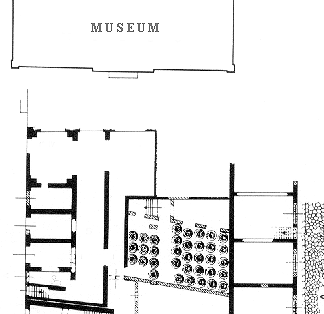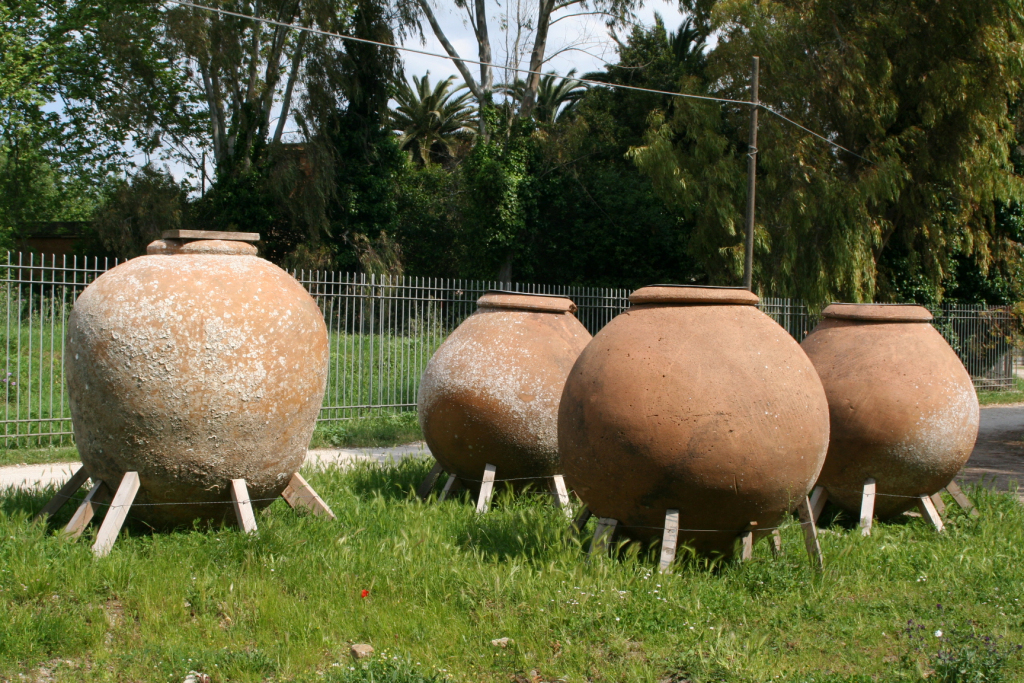|
This building was erected in the late-Hadrianic or early-Antonine period (opus mixtum). In the Severan period some modifications took place (opus latericium), and 35 dolia defossa (buried jars) were installed for storing wine or olive-oil. The building was excavated partially in the early 20th century by Angelo Pasqui. Inscriptions on the rim of the jars indicate the volume, on average 40 amphorae, that is c. 1040 liters. In the dolia the remains of at least 400 terracotta moulds were found (photos of many moulds are on a separate page). After the moulds had been dumped, the dolia were covered with a rough pavement. The moulds consisted of two parts. With the moulds semicircular objects were made approximately the size of a hand. The objects all had the same weight. A relief was stamped on either side of or around the objects. Depicted were animals, scenes in the theatre, amphitheatre and circus, erotic and mythological scenes, and still lives. Similar moulds have been found in the western half of North Africa, on the east coast of Spain, in the south and east of France, in Italy, perhaps in Austria, and in Greece. They are all remarkably similar, were possibly made in North Africa, and are to be dated to the late second and first half of the third century AD. It is significant that the objects that were made with the moulds have never been found. Obviously they were of perishable material. Pasqui suggests that the Ostian moulds were used to make "dolciumi" (confectionary) weighing one pound, produced in a nearby bakery. He points out that among the other finds in the building were many fragments of theatre masks, lamps, many amphorae, and small beakers. In his view we should think of the distribution of crustulum et mulsum, cakes and wine, at the occasion of epula publica and ludi, public meals and games. This interpretation was rejected by Floriani Squarciapino, who maintains that the reliefs are too detailed for pastry, points out that the moulds are not baked well, and that all known moulds for pastry are of a different nature. She thinks of terracotta or wax ex votos or souvenirs. Salomonson criticizes the idea of ex votos: amongst the reliefs no religious scenes or deities are found. The relief on a mould from Marseilles was found again on a coin struck for the Decennalia of Septimius Severus in 202 AD, which leads Salomonson to the suggestion that the objects were presents (missilia), possibly edible, related to these festivities. In the 1990's remains of dolia defossa were found nearby, in a small trench near the museum. From the pottery that was found could be deduced that this building was in use until the early fifth century. |
 Plan of the building. After SO I. |




